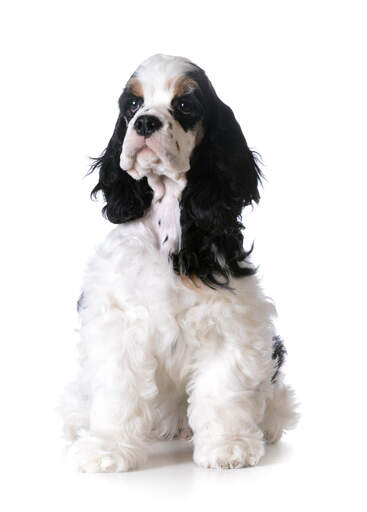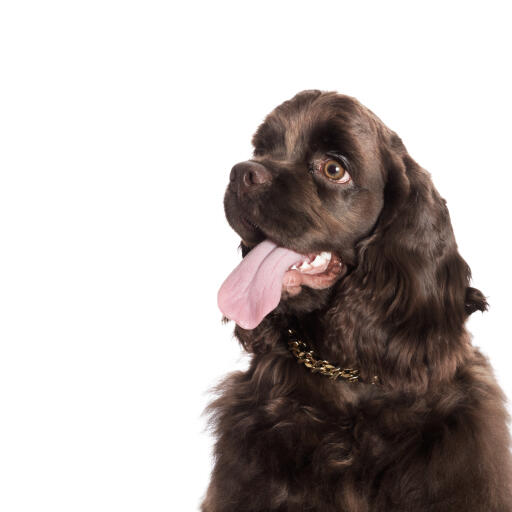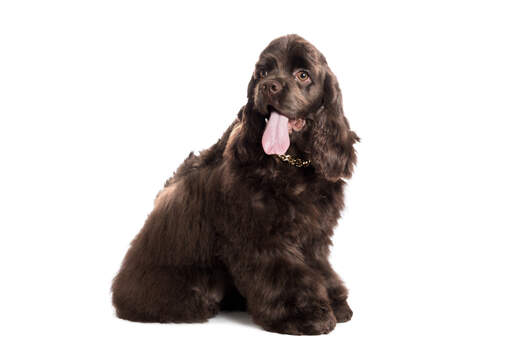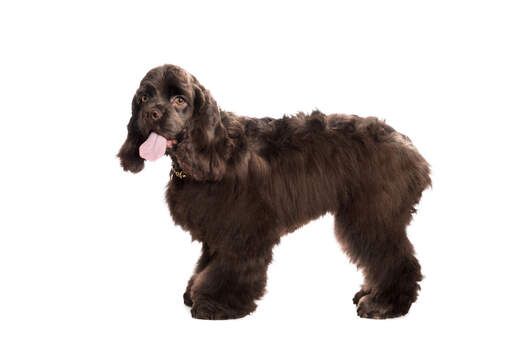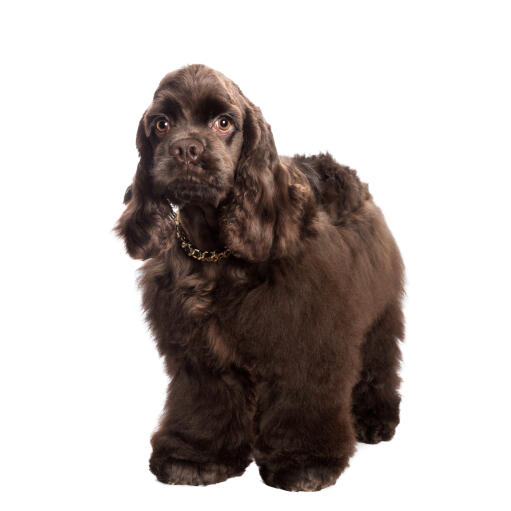Cocker Spaniel (American) Dogs





History
Records indicate that the American Cocker Spaniel (ACS) arrived in America in 1620 on the Mayflower. The breed was then developed over several years, and the American Cocker Spaniel club was formed in 1881. This established the breed everyone knows today, which looks very different from the English Cocker Spaniel. These were originally working dogs, bred to raise and retrieve game; but at the same time, their calm temperament made them great household pets.
Behaviour
The ACS is a dog that loves human company and gets on well with other dogs, and children too. They are naturally shy, so they need to be socialized when still young and exposed to all the noise and different faces that will be part of their adult life. They tend to be submissive, showing their bellies at the first opportunity, and sometimes have a tendency to urinate when they are over excited. This urge can be ‘trained out’ of them, but takes time and effort – and lots of patience. Once they are being house-trained and socialized, they shouldn’t be left on their own for long periods, as loneliness and the stress it brings on can lead to behavioral issues. Crate training can help here, and is highly recommended with this breed. Getting them used to being left alone for short spells is a useful element of the training.
The ACS is an intelligent little dog, but most of its behavior is all about wanting to please its owner. Training needs to be consistent, and the dog needs lots of praise and encouragement. For this breed, praise is a bigger incentive than food treats. They respond to food treats, but like all Spaniels, they tend to be a bit greedy, and will happily overindulge on the treats if given the chance. They love physical contact, so that is the ‘healthy’ ACS treat option!
This breed is very good at retrieval, agility and obedience tasks, and the ACS makes an excellent therapy dog too. Cockers needs loads of exercise, and are not suited for life indoors. They need at least two good walks a day, and ideally lots of outdoor running-around time in between. Recall is usually good in a trained ACS, and they will happily spend all day playing fetch and pretend-hunting, activities that appeal to their instincts and keep them mentally and physically stimulated. They will still want to curl up with you on the sofa after a busy day, though, as they are very affectionate dogs.
This dog’s fur grows quite long, and demands a lot of grooming and trips to the dog clipper every few months. In dog shows, judges look for a long coat, but many owners opt for a shorter, more practical and manageable cut. Daily brushing removes dead hair and tangles. The dog’s eyes need regular wiping to prevent tear staining.
Temperament
American Cocker Spaniels have a happy and gentle temperament. Closer to a toy breed than their English cousin the American Cocker Spaniel still possesses enough athleticism to enjoy a decent daily walk. They are a loving, sociable breed who will become very attached to their families and be happy to meet anyone. They can be a noisy breed and some suffer from timidity which can be reduced through early socialisation.
Health Problems
The ACS is prone to patellar Luxation, cataracts, cherry eye, and Progressive Retinal Atrophy. A condition known as IMHA is also seen. The dog may also develop skin problems, orthopedic diseases (canine hip dysplasia, etc.), hypothyroidism, epilepsy, heart disease, blood clotting disease and liver disease.
This large array of health problems is due to the high levels of inbreeding in the ACS. If buying a puppy, always check the breeding stock, as an unhealthy ACS can end up costing you thousands of dollars in vet bills.
Breed Details
- Status: Common
- Life Expectancy: 12 - 15 years
- Weight: 24 - 31 pounds
- Height: 14 - 15.5"
- Rare: No
- Coat: Long
- Grooming Requirements: Everyday
- Town or Country: Either
- Minimum Home Size: Small House
- Minimum Garden Size: Large Garden
- Breed Type: Gun Dog
- Size: Medium
- Energy Level: Medium
- Exercise Required: Over 2 hours

